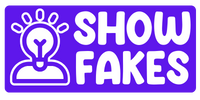Are you tired of endless spreadsheets and chaotic email chains when it comes to tracking requirements for your team’s projects? Look no further! In this comprehensive guide, we’ll walk you through the process of choosing the perfect requirements tracking tool for your team. Say goodbye to confusion and hello to efficiency – let’s get started on finding the right solution for your needs!
Introduction to requirements tracking tools
Requirements tracking tools are essential for any team working on a project, whether it is a software development team or a marketing team. These tools help teams to streamline and manage the process of gathering, organizing, and tracking requirements throughout the project lifecycle.
Why is a requirements tracking tool important for your team?
A requirements tracking tool is a vital component of any successful project management process. It helps teams to efficiently gather, organize, and manage the various requirements needed for a project. Without a proper tracking tool in place, teams can easily become overwhelmed with an abundance of information and struggle to meet project deadlines.
Types of requirements tracking tools available
When it comes to managing and tracking requirements for a project, having the right tool is crucial for success. With the advancement of technology, there are now various types of requirements tracking tools available in the market, each offering unique features and benefits. In this section, we will discuss some of the most common types of requirements tracking tools that you can consider for your team.
Spreadsheets
This is perhaps one of the most basic and widely used tools for tracking requirements. Spreadsheets offer a simple and easy-to-use interface where you can list down all your requirements, assign priorities and track their progress. They also allow for collaboration among team members by providing real-time updates on changes made to the document. However, as projects become more complex, spreadsheets may not be able to handle large amounts of data efficiently.
Agile Tools
These tools are specifically designed for agile teams who follow an iterative development approach. They provide features such as user story management, sprint planning, backlog management and task assignment. Some popular agile tools include JIRA, Trello and Asana.
Requirements Management Software
These are specialized tools that are built specifically for managing requirements throughout the entire project lifecycle. They offer features such as requirement traceability matrix (RTM), version control, change management and impact analysis – all essential elements in successfully managing complex projects with numerous stakeholders.
Test Management Tools
As the name suggests, these tools focus on managing test cases and their execution against specific requirements. They help teams ensure that all necessary tests have been conducted before releasing a product or feature into production.
Visual Collaboration Tools
These tools provide a visual representation of project requirements through diagrams or flowcharts which can make it easier to understand complex relationships between different elements within a project.
Tools with Reporting Capabilities
Reporting is an essential aspect of any project management process as it helps stakeholders stay updated on progress and identify potential risks. Some requirements tracking tools come with built-in reporting capabilities, while others offer integration with third-party reporting software.
Things to consider when choosing a requirements tracking tool
When it comes to managing and tracking requirements for a project, having the right tool can make all the difference. With so many options available in the market, it can be overwhelming to choose the best one for your team’s needs. In this section, we will discuss some important factors to consider when selecting a requirements tracking tool.
Team size and needs
Team size and needs are important factors to consider when choosing the right requirements tracking tool for your team. The size of your team will determine the scope and complexity of your project, while their needs will dictate the specific features and capabilities required in a requirements tracking tool.
Budget
When it comes to choosing the right requirements tracking tool for your team, one of the most important factors to consider is budget. As with any software or tool, there are various options available at different price points and understanding your budget constraints can help narrow down your choices.
Integration with other tools
Integration with other tools is a crucial factor to consider when choosing a requirements tracking tool for your team. In today’s fast-paced work environment, teams rely on multiple tools and software to complete their projects efficiently. Therefore, having a requirements tracking tool that can seamlessly integrate with other tools can greatly increase productivity and streamline the workflow.
User-friendliness and ease of use
User-friendliness and ease of use are crucial factors to consider when choosing a requirements tracking tool for your team. A tool that is not user-friendly and difficult to navigate can lead to frustration and hinder the overall productivity of your team.
Popular requirements tracking tools in the market
There are a plethora of requirements tracking tools available in the market, each with its own unique features and benefits. But which ones are the most popular among teams? In this section, we will discuss the top requirements tracking tools that have gained popularity in recent years.
JIRA
JIRA is one of the most widely used requirements tracking tools in the market. It offers a comprehensive solution for agile project management, allowing teams to track tasks, defects, and user stories efficiently. With its customizable workflows and integration with other project management tools like Confluence and Bitbucket, JIRA has become a go-to tool for many teams.
Trello
Trello is a simple yet powerful visual project management tool that uses boards, lists, and cards to organize tasks and monitor progress. Its intuitive interface makes it easy for teams to collaborate on projects and track requirements in real-time. Trello also offers various integrations with other popular software such as Google Drive, Slack, and Salesforce.
Asana
Asana is another popular choice for managing requirements and tasks across teams. It allows teams to create custom workflows to streamline their processes and stay organized. With features like task assignment, due dates, file attachments, and team communication channels all within one platform beauty tips, Asana has become a favorite among many project managers.
Microsoft Azure DevOps
Formerly known as Visual Studio Team Services (VSTS), Microsoft Azure DevOps is a comprehensive cloud-based platform that provides end-to-end visibility into every aspect of the software development lifecycle (SDLC). It offers robust requirement tracking capabilities along with agile planning tools such as Kanban boards and backlogs.
Monday.com
Monday.com is an intuitive project management tool that focuses on collaboration between team members through visual boards. Its flexible nature allows users to customize their workflows according to their specific needs while still providing powerful requirement tracking capabilities.
VivifyScrum
VivifyScrum is a web-based project management tool designed specifically for agile teams. It offers a simple and user-friendly interface with features like backlog management, sprint planning, real-time team collaboration, and customizable workflows. With its emphasis on transparency and communication, VivifyScrum has become a popular choice among agile teams.
Features and pricing comparison
When it comes to choosing the right requirements tracking tool for your team, comparing features and pricing is a crucial step. With so many options available in the market, it can be overwhelming to determine which tool will best suit your team’s needs.
Reviews and ratings from users
Reviews and ratings from users are an essential aspect to consider when choosing the right requirements tracking tool for your team. These insights provide valuable information about the user experience, features, and overall satisfaction with the tool. By reading reviews and checking ratings from other users, you can gain a better understanding of how the tool performs in real-world scenarios.
How to implement and utilize a requirements
Implementing and utilizing a requirements tracking tool can greatly improve your team’s productivity and streamline the process of managing project requirements. Whether you are working on a small team or a large-scale project, having a solid system in place for tracking and managing requirements is crucial.













